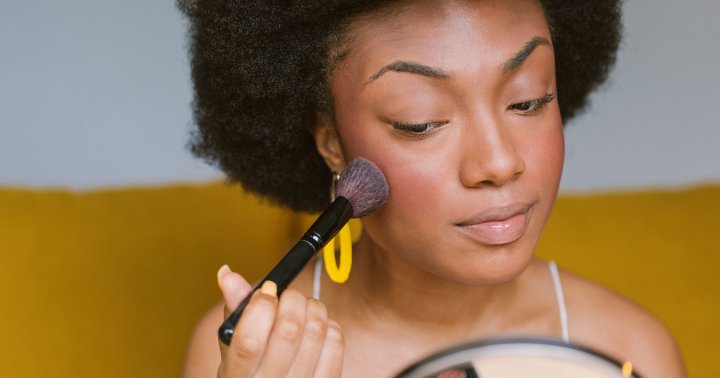Muscle Recovery: Yoga for Knee Pain
Knee pain is a common area of discomfort for athletes that do high impact sports or exercises. It’s also common for people to experience it as we age. Knee clicking or general knee pain during or after exercise doesn’t...
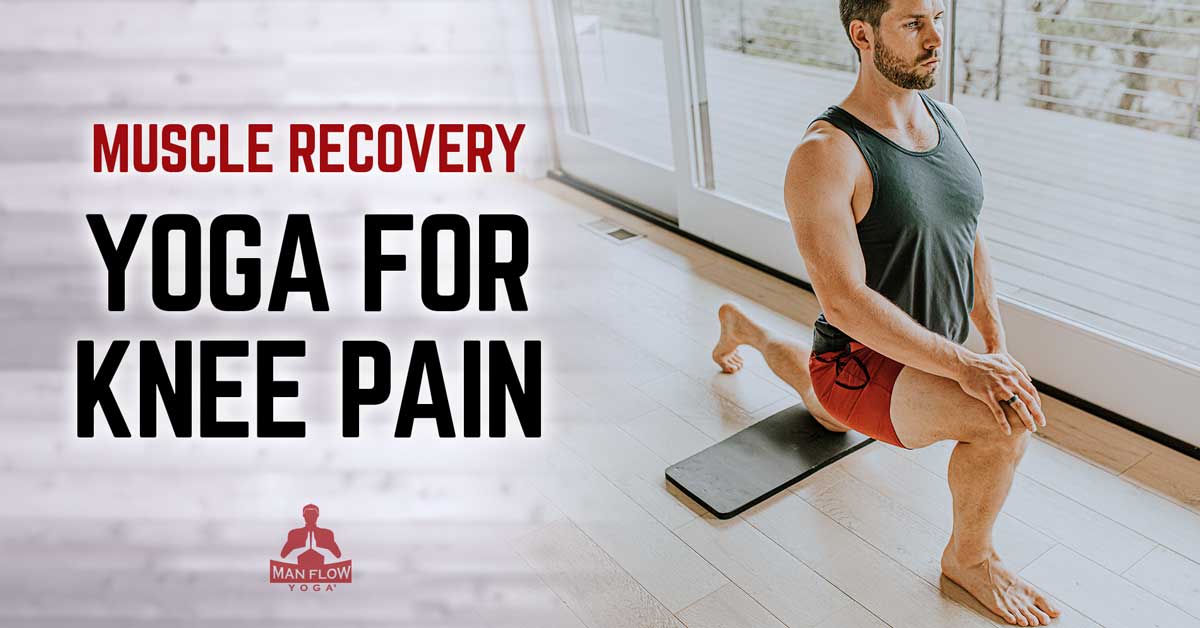
Knee pain is a common area of discomfort for athletes that do high impact sports or exercises. It’s also common for people to experience it as we age. Knee clicking or general knee pain during or after exercise doesn’t have to be the norm. By doing yoga workouts, you can prevent the onslaught of knee pain or combat it head on.
In this article, we will:
Reveal the biggest misconception about knee healthReview causes of knee painDiscuss the benefits of yoga for knee painGo over tips for keeping knees safe during yogaProvide a sample workout that can strengthen your kneesOverview of Knee Health & Knee Pain
Knee pain is an incredibly common issue that affects millions of Americans each year. While chronic knee pain can happen because of a past injury such as an MCL tear, it can also happen due to age, obesity, or seemingly no reason at all. By far, the biggest misconception about knee health is that knee pain is caused by having “bad knees”. In reality, it’s most likely that your knees are a symptom of weakness in other parts of the body. Instead of knee surgery, what you can be doing is working to strengthen and increase mobility in your hips, ankles, and core.
Another huge contributing factor to this is prolonged periods of sitting. The more time you spend in a chair or sitting on a couch, the weaker the muscles in your core and hips become, and this puts even more stress on your knees. (This is why the right type of yoga can be so helpful for knee health, since it focuses on hip and core strengthening, and putting your body into positions that counters what you do while sitting!)
Putting stress on your knee through high-impact sports can increase your knee pain and even make it difficult for you to get around. Instead of feeling limited by your knee discomfort potentially leading to you practicing your sport less often, you can work to strengthen those weaker areas and combat knee pain directly.
This is where yoga can help. Yoga can be gentle on your joints and work to strengthen these areas which will both prevent and combat knee pain. One of the best ways to do this is by adding yoga to your weekly workout routine.
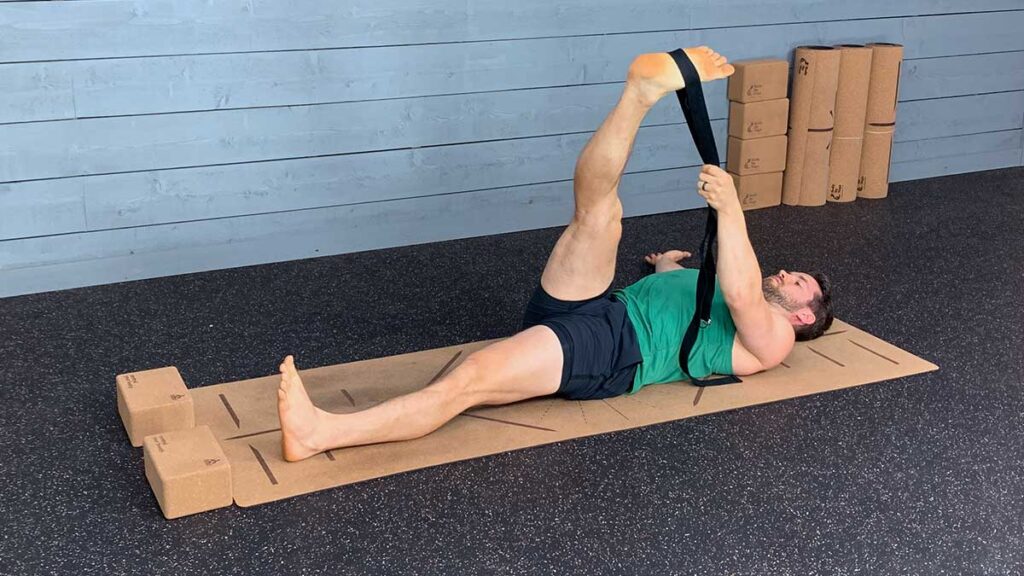
Benefits of Yoga for Knee Pain
Improving the strength, stability, and mobility within your body will help improve your knee pain. This is one of the many reasons why yoga is a great way to combat and prevent the onset of knee pain. When you practice yoga regularly, you’re able to improve these areas and reduce discomfort in your body. There are three main benefits of yoga for knee pain: it’s low impact, it strengthens your lower body, and it reduces stiffness and increases flexibility within your body. Let’s explore each of these benefits.
Yoga is a low-impact exercise.
Low impact exercises are ones that are fairly gentle on your body. Yoga as a low impact exercise will be easier on your joints and muscles, while also strengthening any pain points you have. Though it’s gentle on your knees, it’s an incredibly effective exercise and helps your body in numerous ways. You can also practice yoga more frequently than a lot of other exercises without the fear of getting exhausted or over doing it.
Yoga strengthens your lower body.
Your knees absorb shock and stress when you’re walking around and doing activities. In order to prevent discomfort and pain in your knees, you want to help redistribute some of the shock and stress to other parts of your body. By strengthening your lower body and building your leg muscles, you’re able to take away some of that shock and stress from your knees. Yoga is an excellent exercise for helping you strengthen your lower body.
Yoga helps reduce stiffness and increase your flexibility.
By practicing yoga regularly, you’re able to reduce stiffness within your body and increase your flexibility. Both of these are important for improving your overall mobility. Yoga can help you with your knee’s range of motion and ultimately decrease your knee pain.
Keeping Knees Safe During Yoga
While yoga is low impact, you’ll want to ensure you’re doing what you can to stay comfortable during your workout and reduce any discomfort you may feel in your knees. Here are a few tips that can help.
Focus on Core, Hips, & Ankles
There’s a common misconception that knee pain stems from knee weakness. In reality, it’s because the muscles and joints that support the knee, such as your hips, core, and ankles lack sufficient mobility and strength. Work on poses that will strengthen these areas.
Make sure you do poses correctly
Technique is everything. If you’re doing a pose incorrectly or have bad form, you can potentially injure yourself, tire yourself out quickly, or end up with some pain and discomfort. This is obviously the opposite of what you’re going for. If possible, have a partner review your pose to ensure you’re doing it correctly, or do it infront of a mirror.
Use a thick yoga mat
Having your knees on a bare floor or thin yoga mat may be very uncomfortable. Be sure to get a thick yoga mat to provide some extra padding for your knees. If you already have a thinner yoga mat, you can also double it over to get a little extra cushioning. There are also yoga knee pads for those who need a lot of extra support.
Don’t be afraid to use yoga blocks
Yoga blocks are a great tool for assisting you with different poses. They can help you go deeper into a pose without extra straining and decrease the range of motion needed, while still allowing you to do the correct techniques.
10-Minute Yoga Workout For Strengthening Knees
This yoga workout will address knee strength and stability, help reduce strain on your knees by strengthening supporting areas such as your hips, core, and ankles, and will help increase your mobility, balance, and endurance. At the end of this section – follow along on our YouTube page with other workouts from Dean’s bestselling book, Yoga for Athletes.
Single Leg Bridge
Lie on your back with your arms at your sides. Be sure to keep your shoulders, head, and neck relaxed. Plant your feet hip width apart, bend your knees, and place your heels just in front of your hips. Be sure your toes are pointed forward. Press your feet into the floor and squeeze your glutes to lift your hips. Keep your spine neutral and not arched. Slowly extend one leg forward to hover off the ground. Avoid allowing the hip of the lifted leg to dip. You can also do this supported with a block by placing it just above the sacrum under your lower back and allowing it to rest there while you breathe.
Hold this for 60 seconds per leg.
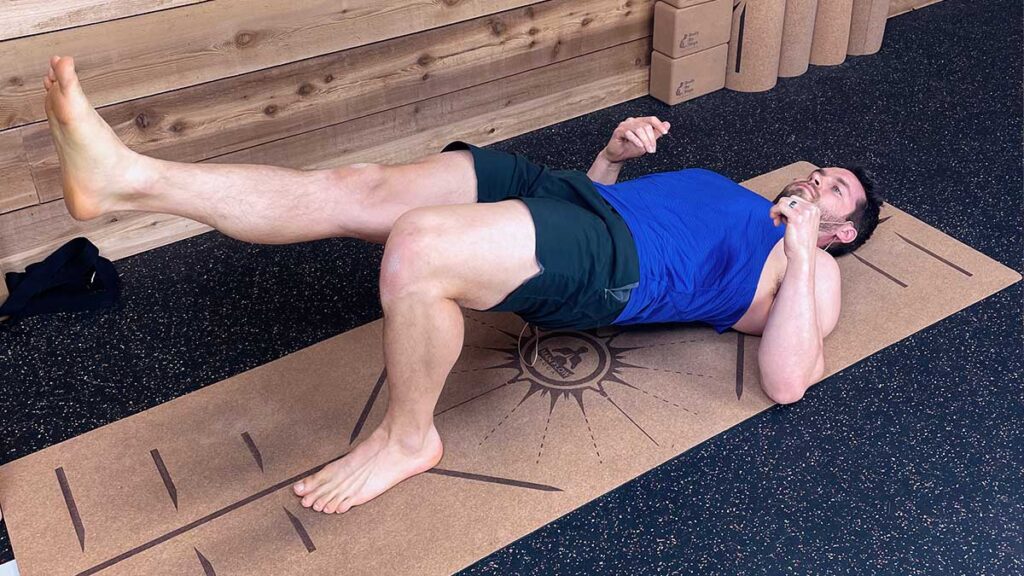
Side Plank
Lie on your side and place your top hand on your hip. Resting on your forearm, use your hips and your core strength to lift your body, keeping your hips and shoulders vertically stacked. If you need strength or balance support, you can bend or plant your knees instead of your feet. Drive your hips as high as possible and extend your non planted arm straight upward, forming a straight line from your planted elbow to your extended hand.
Do this for 60 seconds per side.
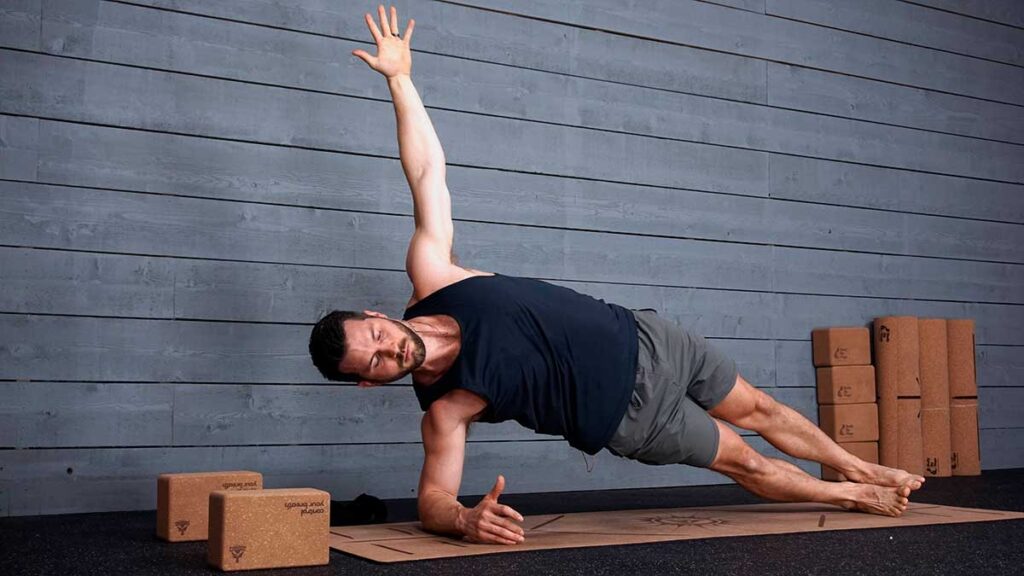
Bird Dog
Start in a table top position with your hips stacked over your knees and your shoulders stacked over your hands. Keep your spine and neck neutral. Look straight down. Without moving the rest of your body, extend one arm forward to form a straight line from your hips to your extended fingertips.Then extend your opposite leg straight back, toes flexed towards your shin.. This should form a straight line from your heel to your extended fingertips. When finished, return to the tabletop position and do the opposite side.
Hold this for 30 seconds per side.
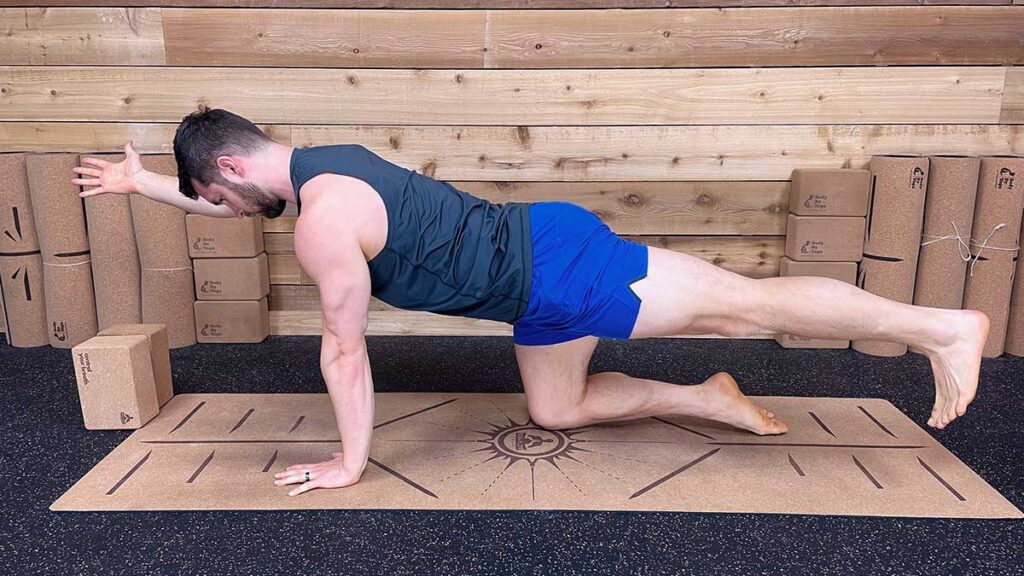
Boat
Start in a seated position with your feet planted in front of you and your knees bent. Place your hands on either side of your hips and sit as upright as possible. Lean back slightly to point your chest upward and straighten your spine. Slowly lift your feet off the floor. Keep your chest lifted and your back neutral. Life your shins parallel to the floor. Hold yourself upright and extend your arms in front of you with your palms facing up. Inhale to lift your chest and exhale to squeeze your core, tighten your quadriceps and increase overall muscle activation. You may stay in this position or go further by straightening your legs as much as possible while maintaining a straight spine.
Hold this for 30 seconds.
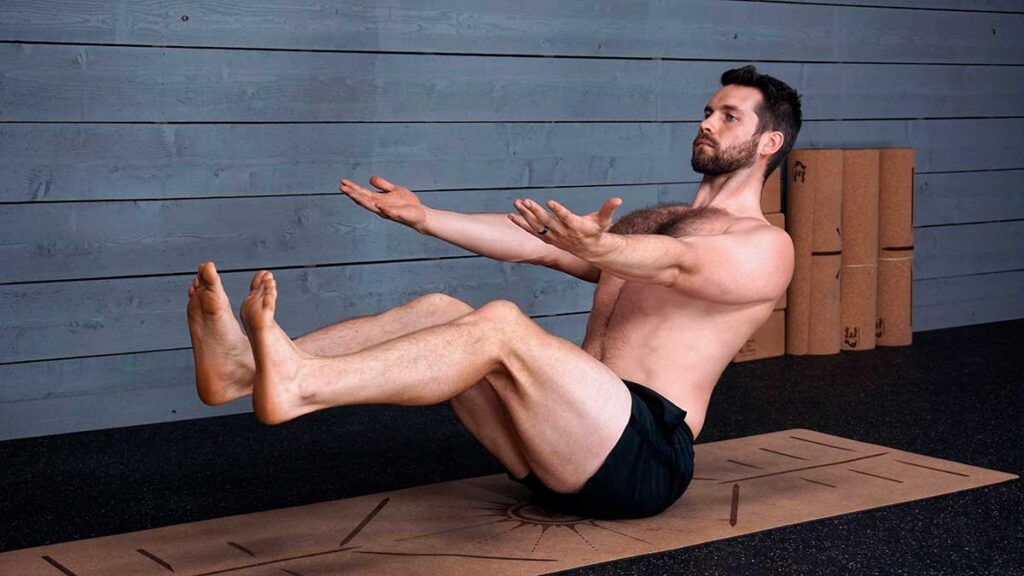
Horse
Stand with your feet 4 – 5 feet apart and toes turned out to 45 degrees. Sink into a wide legged squat with your toes pointed out. Keep your spine neutral and knees tracking over your middle toes. Firmly engage your glutes and squeeze your core to keep your hips under your torso. Extend your arms out in front of you to help counterbalance and go as deep into the squat as you can with a neutral spinal alignment.
Hold this for 60 seconds.
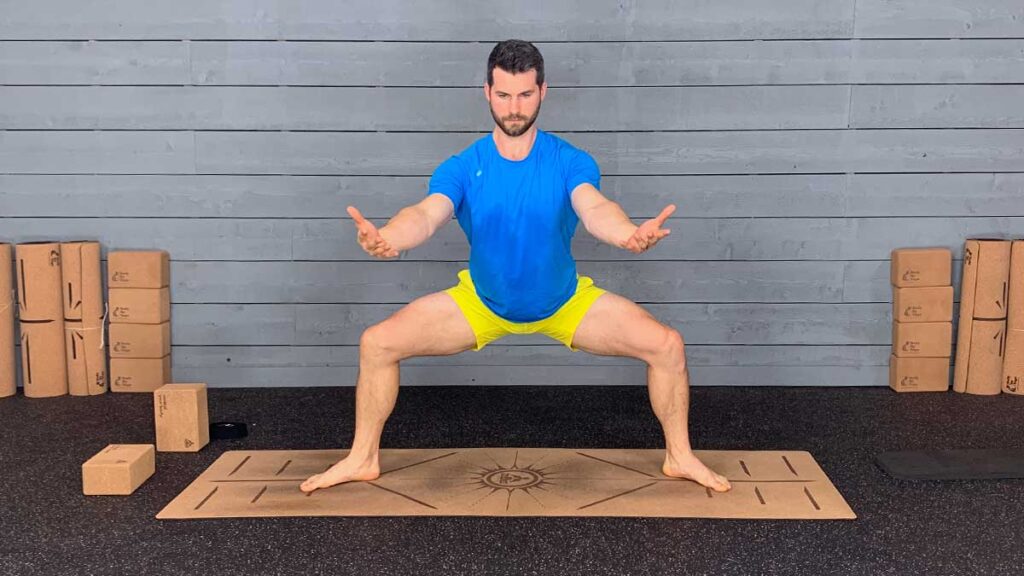
Tree
Bring yourself to a standing position and shift your body weight into one foot. Press the sole of the opposite foot into the shin or thigh of the standing leg. Keep your hips squared forward. If possible, extend your arms in a v-shape overhead.
Hold this for 60 seconds per side.
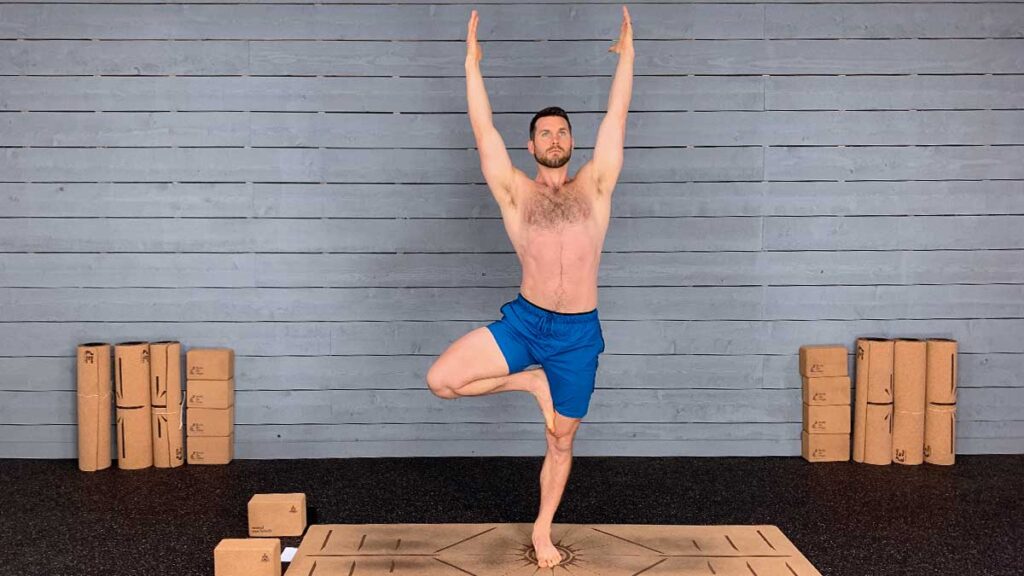
Airplane
Stand in a shallow lunge with your hips squared forward and your arms along your sides, palms facing forward. Maintaining a straight spine with your core engaged, shift your weight into your front foot and lift your back leg off the ground. Hinge at the hips as you bring your torso forward while extending your back leg. Keep your arms straight along your sides and your core actively engaged. Gaze straight down or slightly forward to help maintain balance. Lengthen your body as much as possible by pressing the crown of your head forward, locking out your lifted leg and pointing your toes.
Hold this for 60 seconds per side.
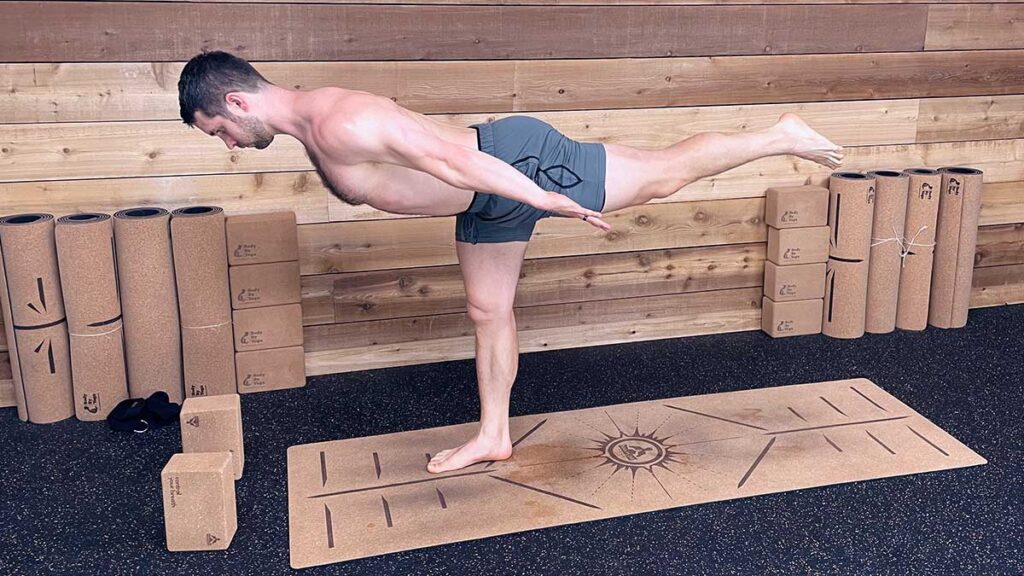

Grab Yoga for Athletes: 10 Minute Yoga Workouts To Make You Better At Your Sport for more workouts, step by step instructions on poses, and more. Get noticeable results that will help you improve your athletic performance and prevent injuries.


 AbJimroe
AbJimroe 








